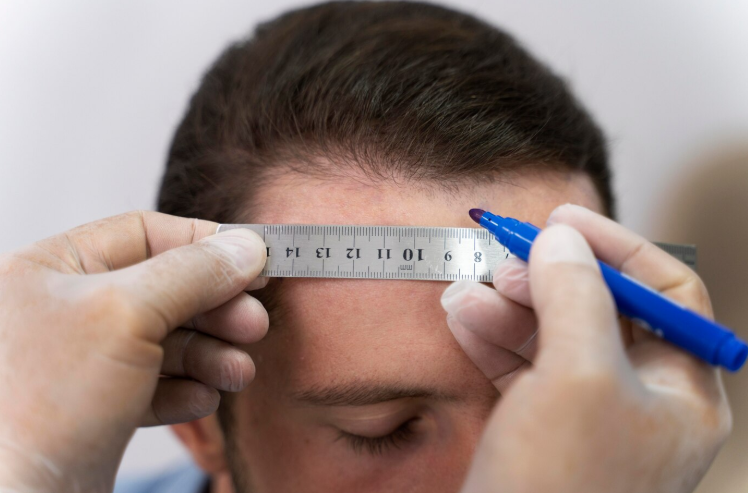Storm Preparedness: Your Complete Guide to Family Safety
Severe weather can mean the difference between safety and disaster, yet many families remain unprepared. Storm preparedness goes beyond buying batteries—it’s about protecting your family and property with a plan. This guide covers key steps to identify risks, build emergency kits, protect your home, and keep your loved ones safe during severe weather.
Assessing Storm Risks Around Your Property
Before you can prepare effectively, you need to understand what you’re preparing for. Different regions face different storm-related threats, and your specific property may have unique vulnerabilities that require special attention.
Start by researching the types of severe weather common in your area. Coastal regions face hurricanes and storm surge, while inland areas might deal with tornadoes, severe thunderstorms, or winter storms. Contact your local emergency management office or visit FEMA’s website to access hazard maps and historical weather data for your location.
Next, conduct a thorough assessment of your property. Walk around your home and identify potential hazards. Look for large trees that could fall on your house, loose outdoor furniture that could become projectiles, and areas prone to flooding. Check your roof for loose shingles, inspect your windows for cracks, and examine your gutters for blockages that could cause water backup.
Don’t forget about your home’s structural elements. Older homes may have outdated electrical systems that pose fire risks during power surges. Your foundation might have cracks that could worsen during flooding. These vulnerabilities help you prioritize which protective measures to implement first.
Creating Your Family Emergency Plan
A solid emergency plan removes guesswork and panic from storm situations. Your plan should be detailed enough to guide decision-making but simple enough that every family member can understand and follow it.
Begin by designating safe areas in your home for different types of storms. For tornadoes, identify the lowest floor’s interior room, away from windows. For hurricanes, choose a room on the first floor with the fewest windows. Make sure these spaces can accommodate your entire family comfortably for extended periods.
Establish clear communication protocols. Designate an out-of-state contact person who can serve as a central point for family members to check in. Program important phone numbers into every family member’s phone, and keep a written list as backup. Create a simple communication tree showing who calls whom and in what order.
Plan multiple evacuation routes from your home and neighborhood. Primary routes may become impassable during storms, so having alternatives prevents you from getting trapped. Practice these routes with your family, and time how long each takes under normal conditions. Account for the fact that evacuation during actual emergencies will take significantly longer.
Document your plan in writing and review it regularly with all household members. Children should know where to go, what to do, and how to contact help if separated from adults. Consider the special needs of elderly family members, pets, and anyone with medical conditions that require additional planning.
See also: The Rising Need for Lifeguard Training Among Teenagers
Building Your Storm Emergency Kit
Your emergency kit serves as your lifeline when normal services become unavailable. A well-stocked kit should sustain your family for at least 72 hours, though many experts now recommend preparing for up to two weeks of self-sufficiency.
Water is your highest priority. Store one gallon per person per day, and don’t forget water for pets. Keep water in sturdy containers away from toxic materials, and replace stored water every six months. Include water purification tablets or a portable water filter as backup options.
Food supplies should focus on non-perishable items that require minimal preparation. Stock canned goods, dried fruits, nuts, protein bars, and other shelf-stable options. Include a manual can opener, disposable plates and utensils, and don’t forget any special dietary needs. Rotate food supplies regularly to maintain freshness.
Essential supplies include flashlights, a battery-powered or hand-crank radio, extra batteries, a first aid kit, medications, sanitation supplies, and important documents in waterproof containers. Add cash in small bills, local maps, emergency contact information, and supplies for infants or elderly family members as needed.
Protecting Your Home from Storm Damage
Physical preparations for your home can prevent thousands of dollars in damage and keep your family safer during severe weather. Focus on the most vulnerable areas first, then work toward comprehensive protection.
Windows and doors represent major weak points during storms. Install storm shutters or cut plywood panels to fit each window, marking which piece goes where for quick installation. Reinforce sliding glass doors with storm panels or impact-resistant film. Check that all exterior doors close and lock securely, and consider adding deadbolts for extra security.
Your roof and gutters need special attention before storm season. Clean gutters and downspouts to prevent water backup. Inspect and repair loose or damaged shingles, and trim tree branches that hang over your roof. If you have a garage, ensure the door operates properly and consider professional garage door repair in Idaho if you notice any issues, as garage doors are particularly vulnerable to wind damage and often fail during storms.
Secure outdoor items that could become dangerous projectiles. Bring in or tie down patio furniture, grills, decorations, and anything else that could blow around. Clean up your yard, removing dead branches and debris that storms could pick up and hurl at your home or your neighbors’ properties.
Staying Safe During the Storm
When severe weather arrives, your preparation pays off, but you still need to make smart decisions to keep your family safe. Monitor weather updates continuously through battery-powered radio or weather apps on your phone while you still have power and cellular service.
Stay indoors and away from windows throughout the storm. Even if conditions seem to improve temporarily, don’t venture outside until authorities declare the all-clear. Storm eyes and brief lulls can fool people into thinking danger has passed, only to have conditions deteriorate rapidly again.
Avoid using electrical appliances during thunderstorms, and stay away from plumbing fixtures that could conduct electricity. If you lose power, use flashlights instead of candles to prevent fire risks. Keep refrigerator and freezer doors closed to maintain food safety as long as possible.
If flooding occurs, never attempt to walk or drive through moving water. Just six inches of moving water can knock you down, and twelve inches can carry away a vehicle. Move to higher ground immediately if water begins entering your home, and signal for help if you become trapped.
Recovery and Safety After the Storm
Post-storm recovery requires just as much caution as riding out the storm itself. Many storm-related injuries occur during cleanup and recovery efforts, often because people rush to assess damage before conditions are truly safe.
Wait for official all-clear announcements before going outside. Downed power lines, unstable trees, and flooding may persist even after the winds die down. When you do venture out, wear sturdy shoes and protective clothing. Watch for hazards like broken glass, nails, and sharp debris that storms scatter everywhere.
Document damage immediately for insurance purposes. Take photos of all affected areas and damaged belongings before beginning cleanup. Contact your insurance company as soon as possible to begin the claims process. Keep receipts for any emergency repairs or temporary living expenses.
Be extremely cautious around water and electrical systems. Never touch downed power lines or electrical equipment in wet conditions. If your home floods, have electrical systems inspected by professionals before restoring power. Use generators only outdoors, never in garages or basements, to prevent carbon monoxide poisoning.
Essential Emergency Contacts and Resources
Compile a comprehensive list of emergency contacts and resources before you need them. Include local emergency services, utility companies, insurance agents, and contractors for emergency repairs. Program these numbers into all family members’ phones and keep written copies in your emergency kit.
Key contacts should include your local emergency management office, power company, water authority, and gas company. Add numbers for trusted contractors who can handle emergency repairs like roofing, plumbing, and electrical work. Include your insurance agent’s direct line and your policy numbers for quick reference.
Research community resources available during emergencies. Know locations of emergency shelters, hospitals, and evacuation centers. Identify which radio stations and websites provide official emergency information for your area. Many communities offer text alert systems that provide real-time updates during emergencies.
Conclusion
Storm preparedness is an ongoing commitment to safety. Start with key tasks like risk assessment and emergency planning. Build your emergency kit gradually if needed. Preparedness helps not just during storms but also in recovery, reducing stress and costs. Prioritize it as a family, update your plan and supplies, and stay informed. When severe weather hits, you’ll face it confidently, knowing you’re ready.






